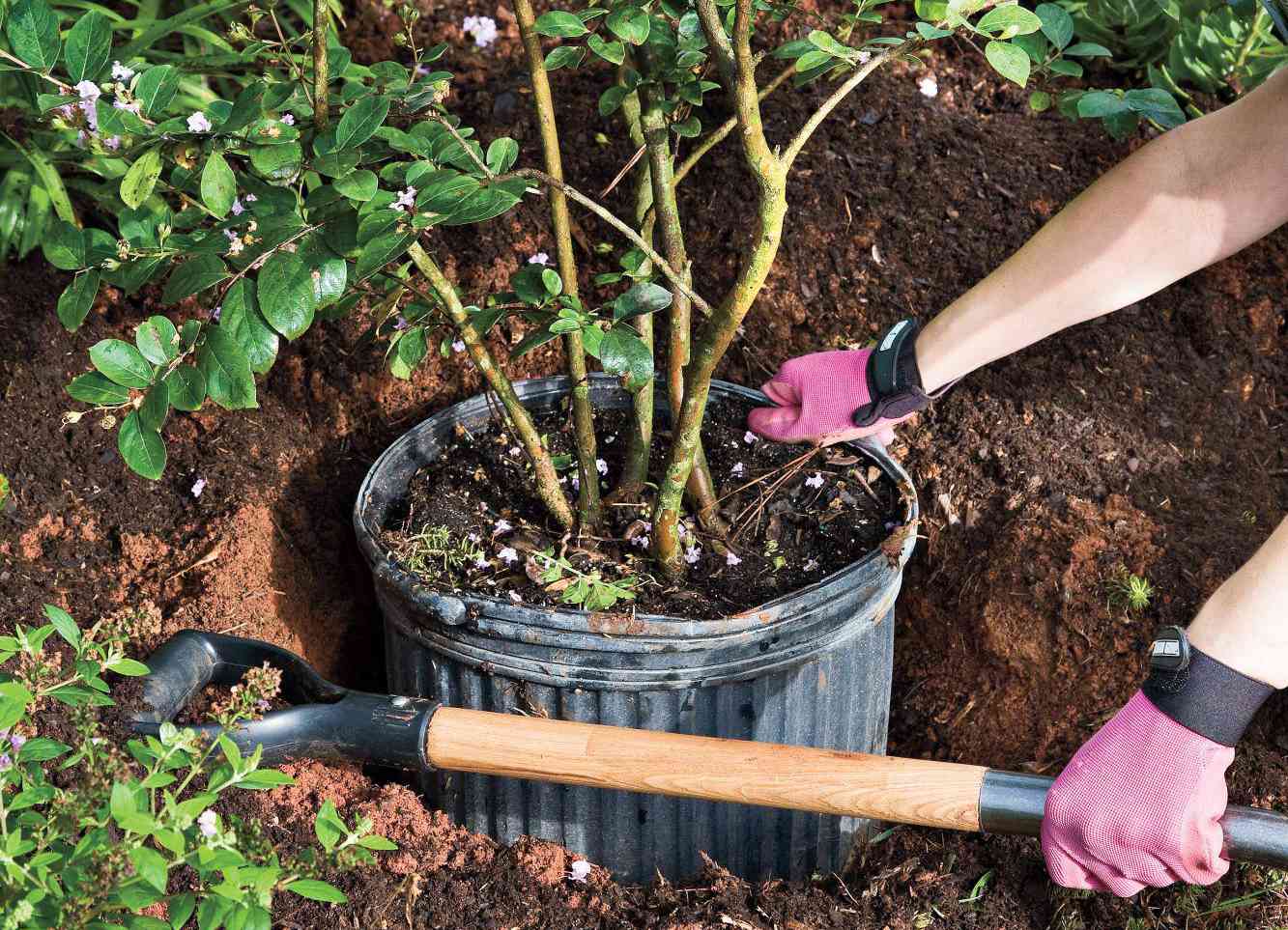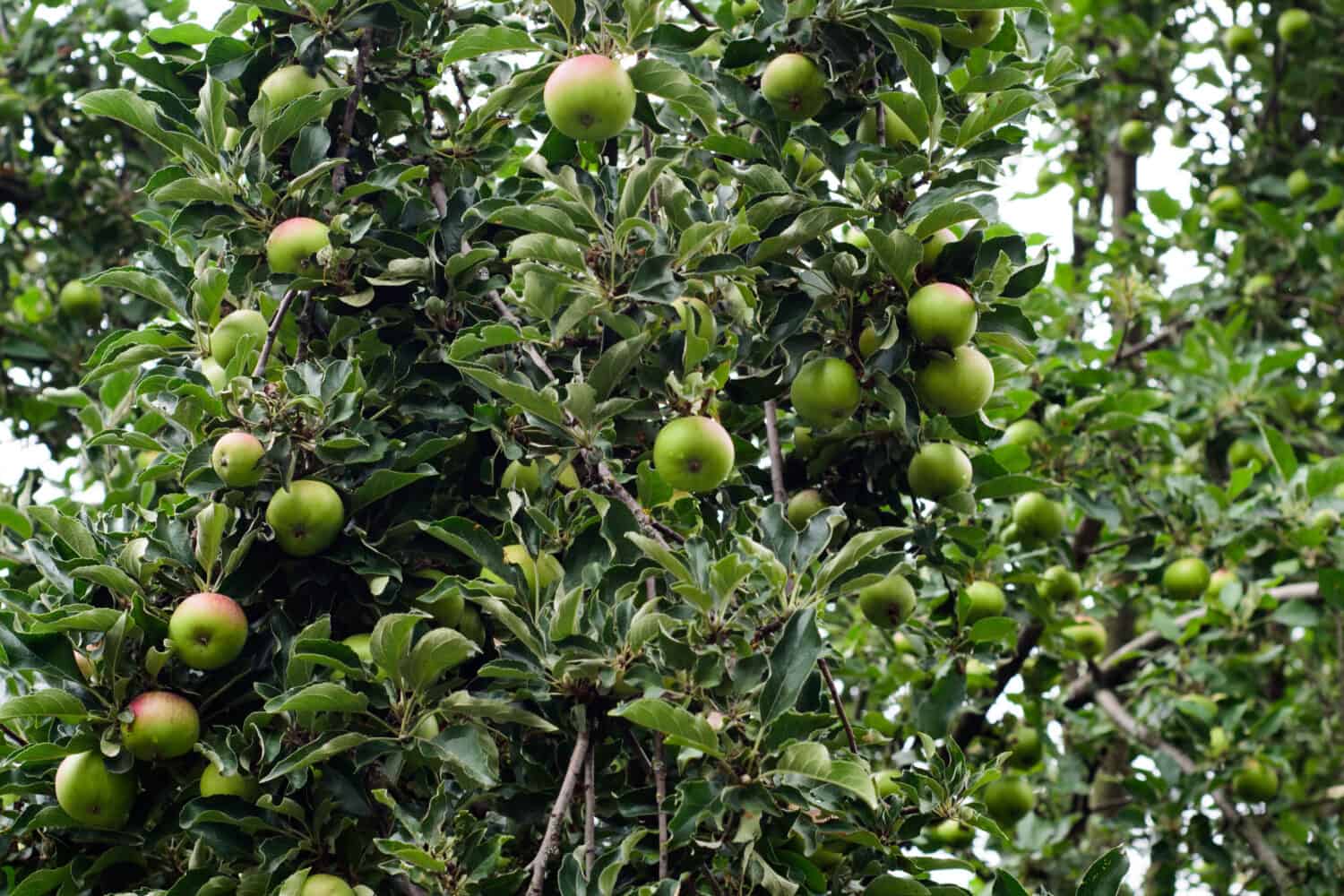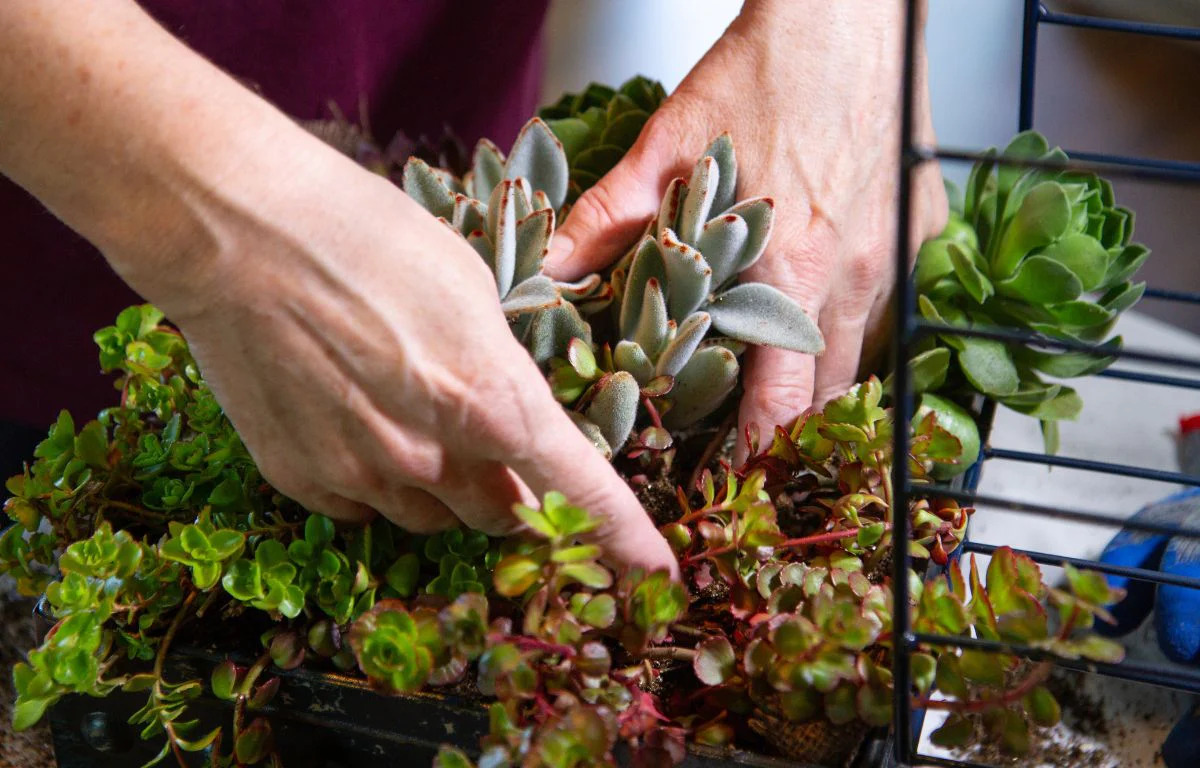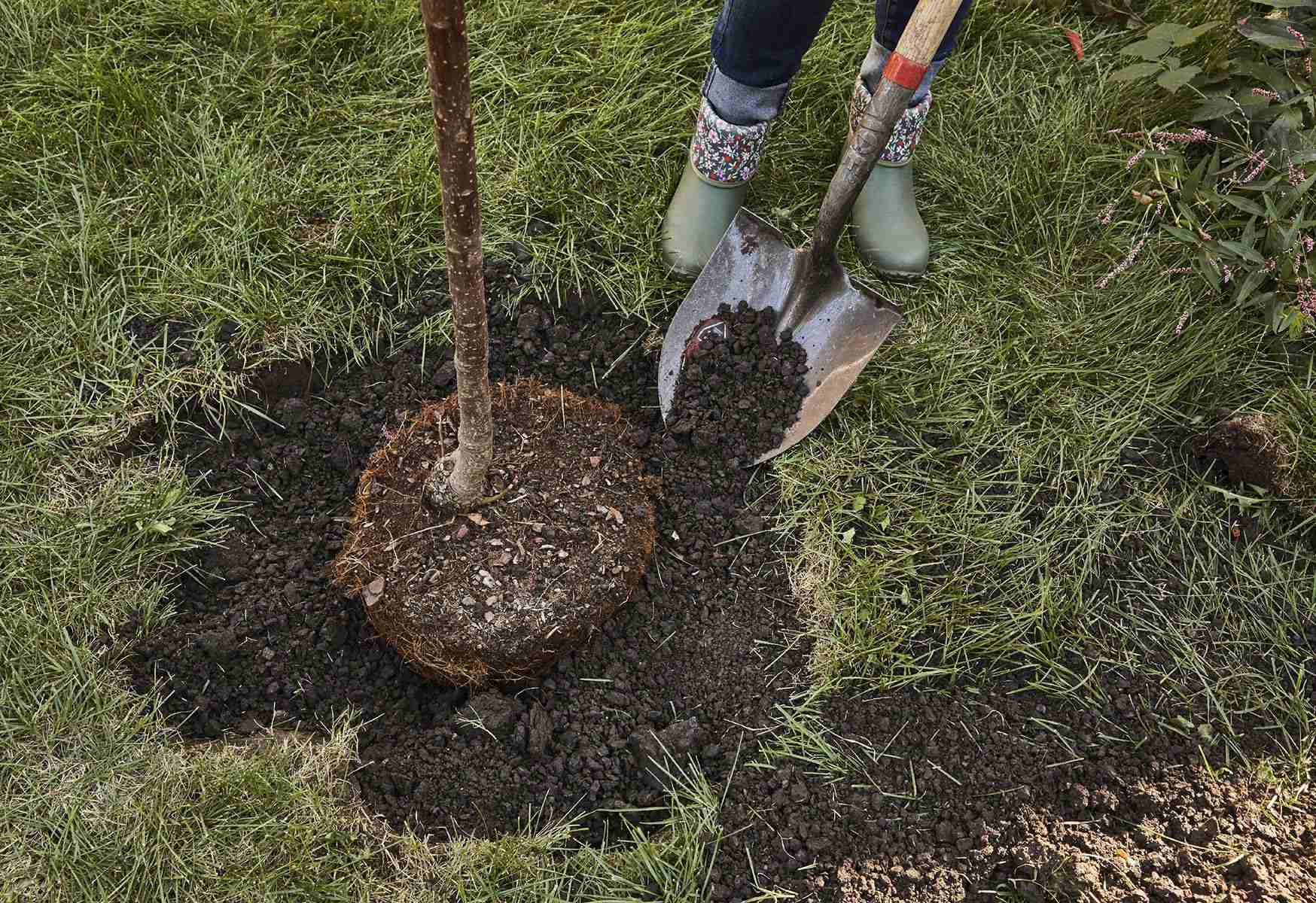Home>Gardening News and Trends>Latest News>When Stake Is Needed For Planting A Tree?


Latest News
When Stake Is Needed For Planting A Tree?
Modified: February 8, 2024
Find out the latest news on when stake is needed for planting a tree. Discover expert advice and tips for successful tree planting.
(Many of the links in this article redirect to a specific reviewed product. Your purchase of these products through affiliate links helps to generate commission for Chicagolandgardening.com, at no extra cost. Learn more)
Table of Contents
Introduction
Planting a tree is a wonderful way to contribute to the environment and beautify your surroundings. However, ensuring that the newly planted tree grows and thrives requires proper care and attention. One important aspect of tree planting that often goes overlooked is the use of stakes. Staking a tree can provide support and stability during its early growth stages, helping it establish strong roots.
Staking involves securing the tree to a stake or support system to prevent it from leaning or toppling over. While staking can be beneficial in certain circumstances, it is not always necessary. Understanding when to use stakes and how to properly stake a tree are essential to ensure its healthy development.
In this article, we will explore the concept of staking, its advantages and disadvantages, the factors to consider in determining when stake is needed, the proper techniques for staking a tree, and the common mistakes to avoid. By the end, you will have a comprehensive understanding of when and how to stake a newly planted tree.
So, let us delve into the world of tree planting and discover the significance of using stakes to give our plants the best chance at a long and flourishing life.
Understanding the Concept of Stake
When we talk about staking a tree, we are referring to the act of providing external support to a newly planted tree to help it grow upright. The stake acts as a temporary crutch, offering stability and preventing the tree from leaning or falling over until its roots have had a chance to establish and anchor it firmly in the ground.
The basic idea behind staking is to mimic the natural conditions that allow a tree to grow straight and strong. In a forest setting, trees grow close together, providing each other with support and protection against strong winds. However, in urban or landscaped environments, trees may lack this natural support system, making them more susceptible to wind damage or leaning.
By using stakes, we can replicate the support that neighboring trees would provide and give our newly planted trees the best chance at proper growth. Stakes are typically made of wooden or metal poles that are inserted into the ground beside the tree and secured using ties or straps.
It is important to note that not all trees require staking. Some tree species have naturally strong root systems and can withstand windy conditions without additional support. However, certain factors need to be considered when determining whether or not a tree needs staking. These factors include the age and size of the tree, the soil conditions, the location, and the prevailing weather patterns in the area.
The use of stakes can be beneficial in specific situations, such as when planting bare-root trees or saplings with limited root development. They can also provide support for trees that have been recently transplanted or have weak root systems due to construction or soil compaction. Stakes can help stabilize the tree and prevent it from being uprooted or damaged during harsh weather conditions.
However, it’s important to understand that staking a tree for too long can have negative consequences. When stakes are left in place for an extended period, they can hinder the natural movement of the tree, restrict root development, and cause girdling or damage to the trunk. Therefore, it is crucial to accurately assess the need for staking and remove the stakes once the tree has become established and can support itself.
Now that we have a clear understanding of what staking entails, let us explore the advantages and disadvantages of using stakes in the next section.
Advantages and Disadvantages of Using Stakes
The use of stakes when planting trees can provide several benefits, but it is important to weigh these advantages against the potential drawbacks. Let’s explore the advantages and disadvantages of using stakes to support newly planted trees.
Advantages:
- Stability: Stakes provide stability to newly planted trees, especially those with limited root development. They help prevent the tree from leaning or toppling over due to strong winds or other external forces.
- Aid in establishment: Stakes can aid in the establishment of young trees by reducing stress on the root system. By providing support, stakes allow the tree to allocate energy towards root growth and establishment rather than focusing on staying upright.
- Protection: Stakes also provide protection against accidental damage caused by activities such as lawn mowing or vehicular traffic. They create a visible barrier around the tree, ensuring its safety and longevity.
- Temporary support: Stakes are intended to be temporary supports. Once the tree has developed a strong root system and can support itself, the stakes can be removed, allowing the tree to grow naturally.
Disadvantages:
- Dependence: Using stakes can lead to the tree becoming dependent on external support. If stakes are left in place for too long, the tree may not develop adequate structural strength, hindering its ability to withstand wind and other environmental forces.
- Girdling and damage: If stakes are not properly installed and maintained, they can cause damage to the trunk of the tree. Improper attachments or tight bindings can lead to girdling, where the stakes constrict the growth of the tree’s trunk.
- Restriction of movement: Continuous staking can limit the natural movement of the tree, preventing it from developing a strong trunk and stable root system. Trees need some flexibility to respond to wind, allowing them to strengthen their structure.
- Cost and maintenance: Installing stakes requires time, effort, and materials. Additionally, regular inspection and adjustment are necessary to ensure that the stakes are providing effective support without causing harm to the tree.
When deciding whether to use stakes for a newly planted tree, it is essential to carefully evaluate the specific circumstances and consider both the advantages and disadvantages. In the next section, we will discuss the factors to consider in determining when stake is needed for a tree.
Factors to Consider in Determining When Stake is Needed
Deciding whether or not to stake a newly planted tree requires careful consideration of various factors. Not all trees will require staking, and it is crucial to assess the specific circumstances to determine if stake support is necessary. Here are some key factors to consider:
- Tree species: Different tree species have varying levels of root development and structural stability. Some species, such as willows and poplars, have robust root systems and can withstand windy conditions without the need for staking. Research the specific characteristics of the tree species you are planting to determine its staking requirements.
- Tree age and size: Young and small trees typically have less developed root systems and are more vulnerable to wind damage. These trees may benefit from temporary staking to provide stability during their early stages of growth. Conversely, older and larger trees have stronger root systems and may not require staking.
- Soil conditions: The type and condition of the soil can influence the stability of the tree. Trees planted in loose or sandy soil may require additional support to prevent leaning or uprooting. Consider the soil composition and drainage capabilities to assess the need for staking.
- Location: The location of the tree can also impact its need for staking. Trees exposed to high wind or located on slopes may require additional support to withstand strong gusts or prevent soil erosion. Evaluate the specific environmental conditions of the planting site to determine if staking is necessary.
- Weather patterns: Take into account the prevailing weather patterns in your area. If you experience frequent storms or strong winds, investing in proper staking can help protect the tree from damage during adverse weather conditions.
By considering these factors, you can make an informed decision about whether or not to stake your newly planted tree. It is important to remember that every situation is unique, and what works for one tree may not be applicable to another. In the next section, we will explore when it is appropriate to stake a newly planted tree.
When to Stake a Newly Planted Tree
Staking a newly planted tree should only be done when necessary, as unnecessary staking can hinder the tree’s natural development. It is important to understand the appropriate circumstances that warrant staking. Here are some guidelines for determining when to stake a newly planted tree:
- Bare-root and small sapling trees: Trees that are bare-root or have small root systems may require staking to provide stability until their roots have had a chance to establish in the soil. These young trees have limited anchorage and may struggle to stay upright without support.
- Transplanted trees: Trees that have been recently transplanted can benefit from staking to help them adapt to their new location. Transplanting can disrupt the root system of the tree, making it more susceptible to toppling over. Staking provides temporary support during the transition period.
- Weak root systems: Trees with weak or damaged root systems, such as those affected by construction or soil compaction, may require staking to help them establish stability. Weak roots are unable to anchor the tree securely, increasing the risk of leaning or falling.
- Wind-prone areas: If you are planting a tree in an area known for strong winds or gusty conditions, staking may be necessary. The stakes provide additional support and help the tree withstand windy environments, reducing the chances of damage.
- Unstable soil conditions: Planting a tree in loose or sandy soil can result in poor stability. In such cases, staking can help provide the necessary support until the tree’s roots can anchor it securely in the ground.
It is important to note that not all newly planted trees will require staking. If the tree has a strong root system, is planted in stable soil, and is not exposed to extreme environmental conditions, it may be able to establish itself without the need for additional support. Assess the specific circumstances of the tree and consider the factors mentioned earlier to determine if staking is necessary.
Remember that staking should only be a temporary solution. It is crucial to monitor the tree’s progress and remove the stakes once the tree has developed a strong root system and can support itself independently. Leaving stakes in place for too long can have negative consequences, including inhibiting the natural movement and growth of the tree.
Now that we understand when to stake a newly planted tree, let’s explore the proper techniques for staking in the next section.
How to Properly Stake a Tree
Properly staking a tree is crucial to ensure its stability and promote healthy growth. Here are the steps to follow when staking a tree:
- Select the right stakes: Choose sturdy stakes that are 1-2 inches in diameter and long enough to extend above the height of the tree. Ideally, they should be made of wood or metal and resistant to rot or breakage.
- Position the stakes: Place the stakes outside the root ball, about 1 to 2 feet away from the tree. Ensure that the stakes are driven into the ground at least 1 foot deep, ensuring a firm and stable anchor.
- Attach tree ties: Use flexible tree ties or straps to secure the tree to the stakes. Avoid using materials that can constrict or damage the trunk, such as wire or fishing line. Attach the ties loosely to allow for some movement and growth of the tree.
- Check the tension: Ensure that the ties are not too tight or too loose. They should provide support while allowing the tree to sway slightly. Adjust the tension as needed, ensuring that it provides stability without restricting the natural movement of the tree.
- Mulch and water: After staking the tree, apply a layer of organic mulch around the base, keeping it away from the trunk. Mulch helps retain moisture, suppresses weed growth, and promotes soil health. Water the tree regularly to facilitate root growth and establishment.
- Regularly inspect and adjust: Check the stakes, ties, and overall stability of the tree regularly. As the tree grows and develops, you may need to adjust the ties or remove the stakes once the tree can support itself independently.
Remember that staking is not a long-term solution. It is crucial to monitor the tree’s progress and gradually reduce the support provided by the stakes over time. Allowing the tree to develop a strong trunk and root system will ensure its long-term health and structural stability.
By following these steps, you can properly stake a tree and provide it with the necessary support to flourish in its new environment. However, it is essential to be aware of common mistakes to avoid when using stakes, which we will discuss in the next section.
Common Mistakes to Avoid When Using Stakes
While staking can provide support for a newly planted tree, it is important to avoid common mistakes that can hinder its growth and health. Here are some common mistakes to avoid when using stakes:
- Using unnecessary stakes: Not all trees require staking. Avoid using stakes unless necessary. Assess the specific circumstances of the tree and consider factors like tree species, age, size, soil conditions, and location to determine if staking is needed.
- Leaving stakes for too long: Stakes should only be temporary supports. Leaving them in place for an extended period can restrict the natural movement and growth of the tree. Monitor the tree’s progress and remove the stakes once it has developed a strong enough root system.
- Using inappropriate materials: Avoid using materials that can damage the tree, such as wire or fishing line. Use flexible tree ties or straps that allow for some movement and growth without constricting the trunk.
- Tying the tree too tightly: Tying the tree too tightly can girdle the trunk, restrict growth, and cause long-term damage. Ensure the ties are attached loosely, providing support while allowing the tree to sway slightly.
- Ignoring stake maintenance: Regularly inspect the stakes, ties, and the overall stability of the tree. Adjust or replace any damaged or loose components. Proper maintenance ensures that the stakes continue to provide effective support without causing harm to the tree.
- Using inadequate stake placement: Place the stakes outside the root ball, about 1 to 2 feet away from the tree. Drive them deep enough into the ground to ensure stability. Improper stake placement can result in insufficient support and compromise the tree’s stability.
- Incorrect mulching: Avoid piling mulch against the tree’s trunk as it can lead to moisture retention and trunk rot. Apply mulch around the base, keeping it a few inches away from the trunk, and create a shallow saucer shape to allow water to permeate the soil evenly.
Avoiding these common mistakes will help ensure the success of staking and promote the healthy growth of the tree. By providing proper support and care, your newly planted tree will have the best chance to develop into a strong and beautiful addition to your landscape.
Now that we have covered the common mistakes to avoid, let’s conclude our exploration of staking and its importance in tree planting.
Conclusion
Properly staking a newly planted tree can provide valuable support during its early stages of growth, helping it establish a strong root system and thrive in its environment. However, it is important to determine whether staking is necessary based on factors like tree species, age, size, soil conditions, and location. Unnecessary staking or prolonged use of stakes can hinder the tree’s natural development and cause long-term damage.
When staking is needed, following the proper techniques is essential. Select sturdy stakes, position them outside the root ball, and attach tree ties loosely to allow for movement. Regularly inspect and adjust the stakes, removing them once the tree has established a strong root system.
Avoid common mistakes such as using unnecessary stakes, tying the tree too tightly, and leaving stakes for too long. These mistakes can impede the tree’s growth and health.
Remember that staking is a temporary measure, and the goal is for the tree to eventually stand on its own without any external support. By providing the right amount of support and care, your newly planted tree will have the best chance to flourish and enhance the beauty of its surroundings.
So, next time you plant a tree, carefully assess whether staking is necessary, and if it is, stake it properly and monitor its progress. With the right approach, you can ensure the successful growth and long-term health of your beloved trees.









